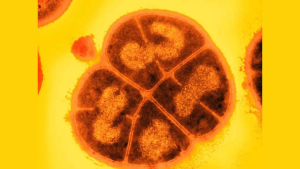Using Extremophiles to Study the Potential of Life on Mars
Written by: Claudia Kowal
Extremophiles are organisms that survive under extreme conditions, living in places we once thought were uninhabitable- like acidic hot springs or arctic tundras. Different types of extremophiles can live in different types of environments, including those with an extreme pH (acidic or basic), temperature, pressure, and even environments that are contaminated with heavy metals. They can be classified into those that must live in extreme environments and those that prefer a more moderate environment, but can tolerate extreme environments (Rampelotto, 2013). Because these organisms live in such extreme environments, scientists are using them to study the potential of life on Mars, an unstable, extreme environment that we don’t know much about. Scientists are studying the most extreme environments on Earth to find which organisms might be living there, and the existence of these organisms in such environments strongly suggest that we might one day find similar life on Mars (Marshall Space Flight Center, 2019).
Current Research on Extremophiles
One example of this research is the search for bacteria in the Alaskan Tundra by NASA astrobiologist, Dr. Richard Hoover. Hoover and his colleagues studied the communities of bacteria and fungi living below ice deep in the tundra. These organisms have been living there for tens of thousands of years, ever since the Pleistocene Age. The research team collected samples from underneath the ice and discovered Carnobacterium Pleistocenium, a new species of bacteria (Marshall Space Flight Center, 2019). This was just one discovery that helped scientists understand the limitations of life– their discovery can be applied to the search for life on Mars because organisms similar to Carnobacterium Pleistocenium are ones with the potential to survive on Mars because of their ability to thrive in a cold climate. Additionally, this bacteria in particular has survived for tens of thousands of years in ice, which is the only known form of water on Mars (Sharp, 2017). Studying organisms like these bacteria could be beneficial to the search for life on Mars, as they could serve as a model for what life on Mars might look like.
Figure 1

An image of Carnobacterium Pleistocenium, alive bacteria is stained in green.
Source: University of Alabama Birmingham
Scientists are not only researching by finding microbes, but also experimenting with them. In a study conducted by Michael Daly, a professor at University of Health Services, researchers tested the physical limits of different species of microbes– more specifically, how they reacted to extreme temperatures and levels of radiation. The microbes were kept in temperatures as low as negative 63 degrees Celsius and were exposed to radiation for 8 days. By the end of the experiment, there was one species of bacteria most resistant to the cold temperature and high radiation exposure called Deinococcus radiodurans, nicknamed “Conan the Bacterium”. The bacterium could withstand 28,000 times as much radiation as a human can. Daly and his researchers suggest that Conan the Bacterium could survive for 280 million years when buried 33 feet below the surface of the planet (Cooper, 2022). The bacterium is another ideal model for what life on Mars might look like because of the extreme temperatures and levels of radiation (Sharp, 2017).
Figure 2

Deinococcus radiodurans, or “Conan the Bacterium”
Source: Michael Daly
Applications
Extremophiles are a great model to use for what life could potentially look like on Mars. Their ability to thrive in extreme conditions demonstrates the potential for life on Mars, a very extreme environment in terms of temperature and radiation levels. There are many kinds of extremophiles and a lot of diversity, which suggests that there could be a wide variety of life on Mars (Marshall Space Flight Center, 2019). There is so much more we can learn about the parameters of life when studying extremophiles, and they could help us better understand the definition of life.
References and Sources
Cooper, K. (2022, October 25). Extremophiles on Mars could survive for hundreds of millions of years. Retrieved from Space.com website: https://www.space.com/mars-microbes-conan-the-bacterium-survival
Marshall Space Flight Center. (2019). NASA – NASA Finds Life at “Extremes.” Retrieved from Nasa.gov website: https://www.nasa.gov/vision/earth/livingthings/extremophile1.html
Rampelotto, P. (2013). Extremophiles and Extreme Environments. Life, 3(3), 482–485. https://doi.org/10.3390/life3030482
Sharp, T. (2017, September 12). Mars’ Atmosphere: Composition, Climate & Weather. Retrieved from Space.com website: https://www.space.com/16903-mars-atmosphere-climate-weather.html
3 thoughts on “Using Extremophiles to Study the Potential of Life on Mars”